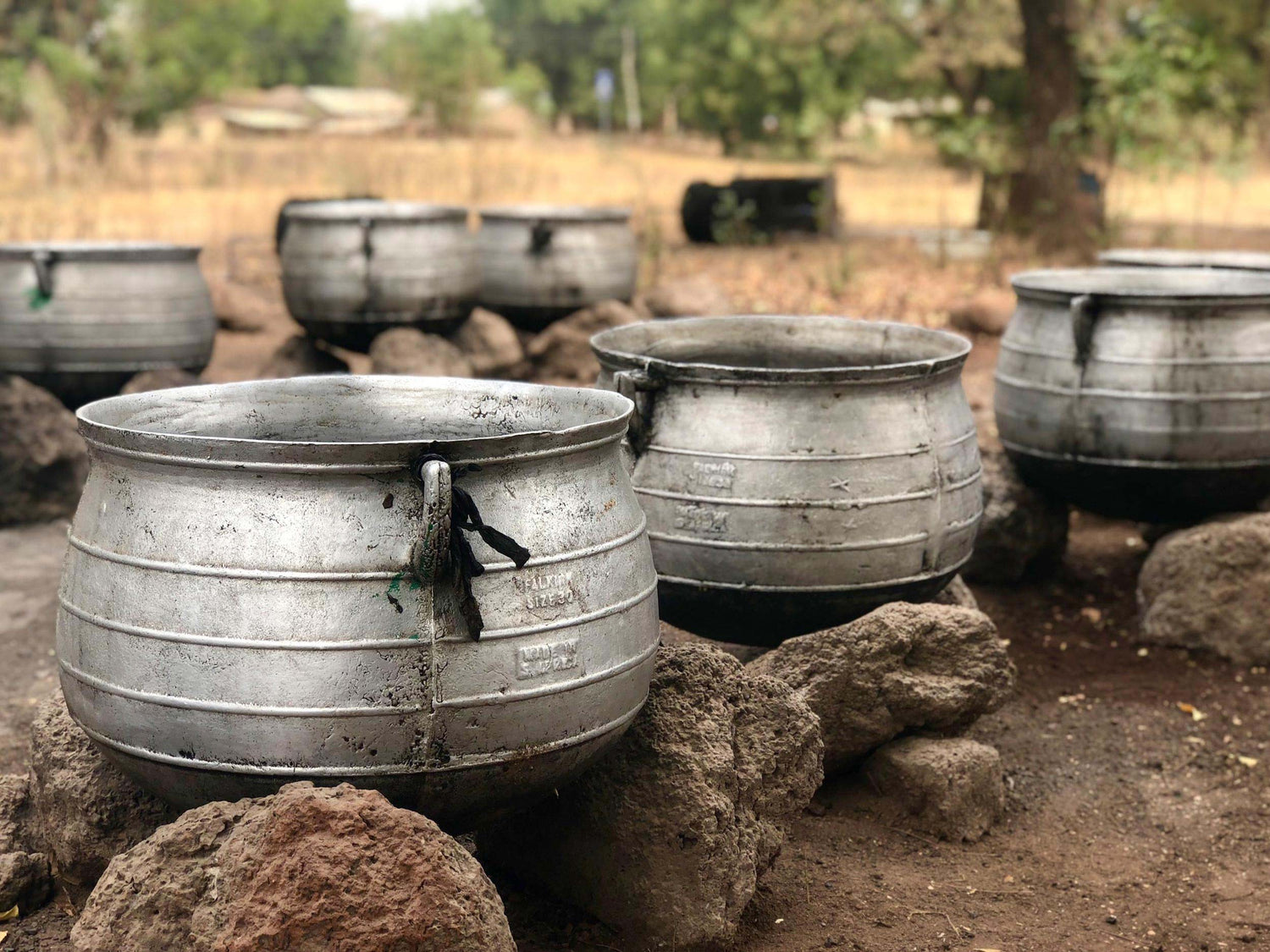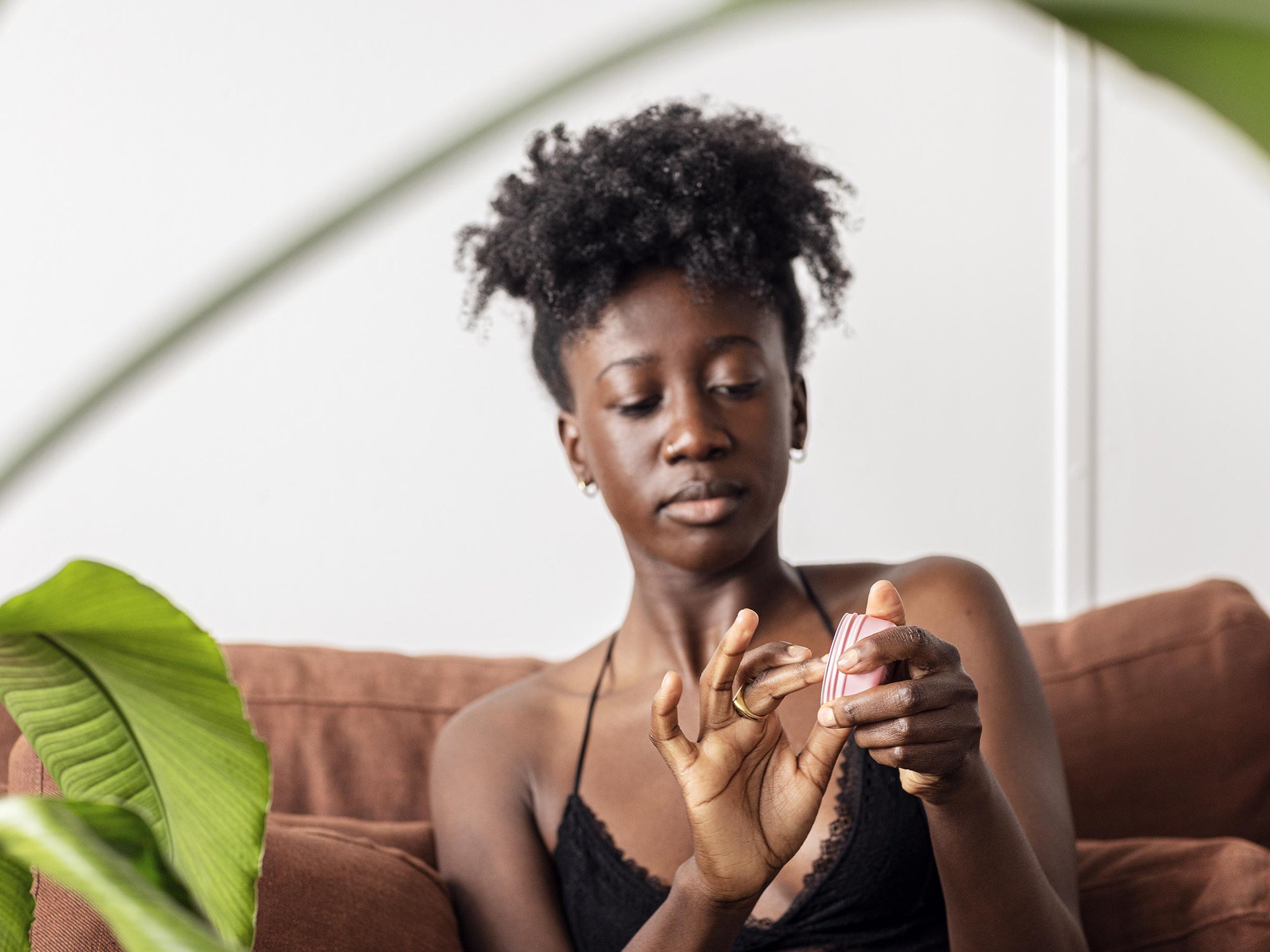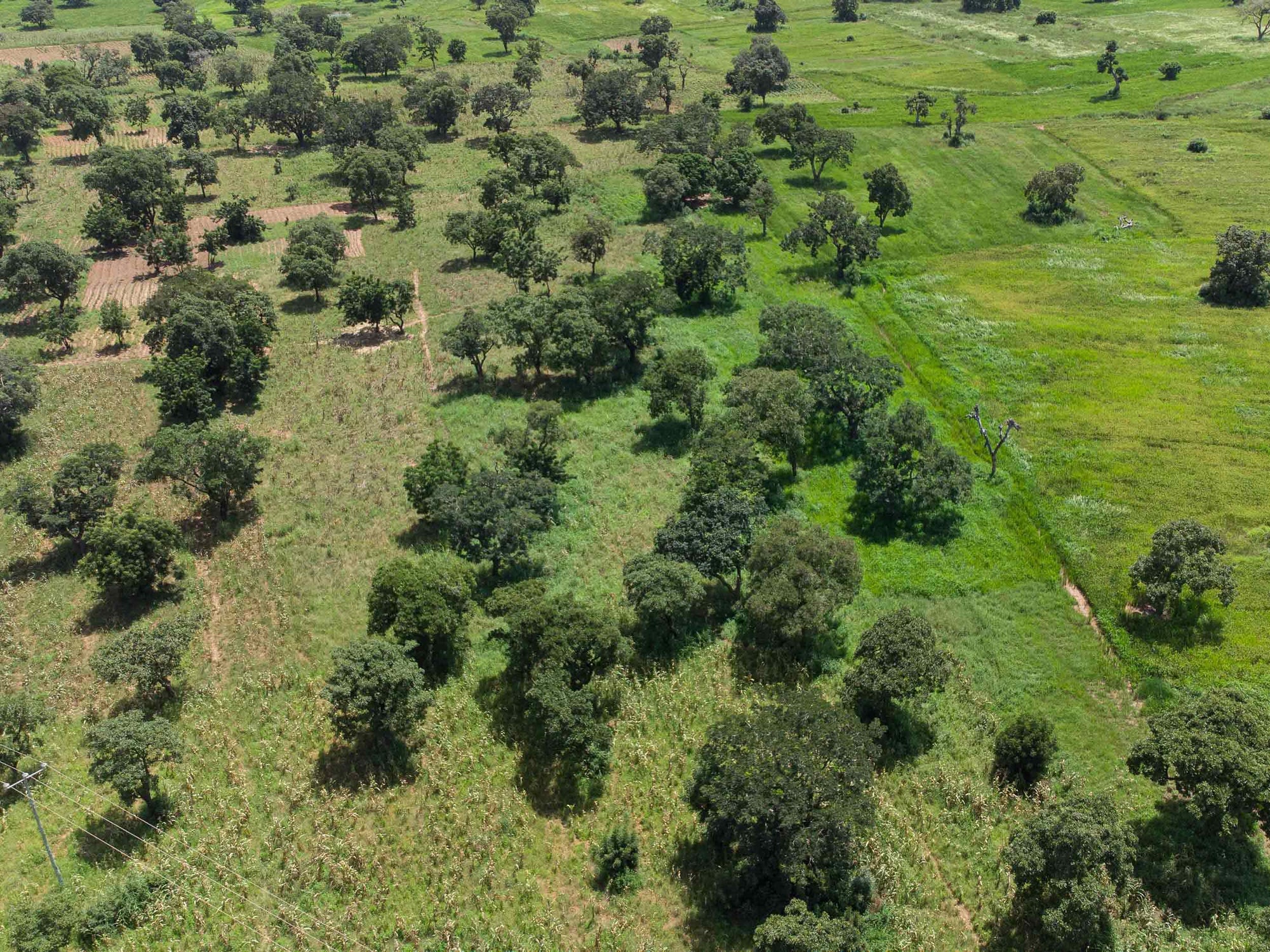The shea tree grows wild and has a height of 6 to 12 metres and is most similar in species to the European oak. The large leaves are in clusters at the end of the branches and are elongated and rounded at the front with a wavy edge. The flowers grow in dense clusters of 50 to 100 flowers. The flowers are beige-white and smell similar to honey. The fruits are about 5 x 3 cm and the nut they contain has a thick shell. The ripe flesh is edible.
The nuts have a similar shape to the fruit and are chestnut-like with a shiny brownish colour. If the shell of the nut is cracked open, one comes to the shea nut kernel. Collection time is in May, June and July during the shea season, because this is when the fruits fall to the ground.
Root plant: Vitellaria paradoxa
Synonym: Butyrospermum paradoxum, shea tree or also called shea tree
 Shea tree in the north of Ghana
Shea tree in the north of Ghana
 Shea fruit
Shea fruit
Production
The fruits of the shea tree are collected for extraction. The pulp is then removed and can be eaten. The nuts are then dried in the sun. Another possibility is to cook the nuts first and then dry them in the sun.
To remove the shells, the nuts are gently handled with wooden gags and sieved through coarse-meshed baskets to separate the shells from the kernels. The small parts of the shells fall to the ground or are blown away by the wind and the kernels remain in the basket. The kernels are then passed through a press mill and then roasted in an oven. This is the only way to extract the oil from the nut. Once the crushed, roasted nuts have cooled down again, they are ground in a grinder or grating bowl. This mass is stirred by hand until the oil separates from the water. It is then heated, filtered, stirred cold and finally packaged.


Individual manufacturing steps
- Collect fruit
- Peel fruit
- Wash nuts & sun-drying
- Beat kernel from nuts
- Crush cores
- Roast kernels & cool down
- Grind kernels
- Stir by hand until the oil separates from the water
- Gently cook the mixture so that the remaining water dissolves
- Take from the fire & cool down
- Have oil set & sieve
- Stir the oil cold until it becomes butter


There can be very big differences in the quality of shea butter depending on the manufacturer. This is like the production of wine. Not all wine is the same. The extraction of the fruit, the production and storage play a central role. The shea butter from SHEA YEAH is always unrefined and certified organic.
Heartily
Sandra




2 comments
Sandra Fischer
Liebe Rahel Vielen Dank für Deine Nachricht. Leider lässt dieser Blog die Funktion direkt auf Kommentare zu antworten nicht zu. Deshalb verfasse ich hier selber einen Kommentar. Unraffinierte Sheabutter hat in der Tat ganz unterschiedliche Qualitäten. Den Duft zu neutralisieren ist schwierig bis unmöglich. Lange lagern ist das einzige was helfen könnte. Ich empfehle Dir da gut auf die eigene Nase (und Augen) zu hören ob Du Lust hast diese Sheabutter zu verwenden. Es ist jeweils schwer zu sagen wie eine Sheabutter hergestellt, gelagert und transportiert wurde. All dies hat natürlich Einfluss auf die Qualität und ob sie überhaupt noch geniessbar ist. Ich hoffe dies hilft Dir zu weiter. Beste Grüsse Sandra
Liebe Rahel Vielen Dank für Deine Nachricht. Leider lässt dieser Blog die Funktion direkt auf Kommentare zu antworten nicht zu. Deshalb verfasse ich hier selber einen Kommentar. Unraffinierte Sheabutter hat in der Tat ganz unterschiedliche Qualitäten. Den Duft zu neutralisieren ist schwierig bis unmöglich. Lange lagern ist das einzige was helfen könnte. Ich empfehle Dir da gut auf die eigene Nase (und Augen) zu hören ob Du Lust hast diese Sheabutter zu verwenden. Es ist jeweils schwer zu sagen wie eine Sheabutter hergestellt, gelagert und transportiert wurde. All dies hat natürlich Einfluss auf die Qualität und ob sie überhaupt noch geniessbar ist. Ich hoffe dies hilft Dir zu weiter. Beste Grüsse Sandra
Rahel
Liebe Sandra, ich habe echte afrikanische Sheabutterstücke bekommen, grün-gelb-weisslich. Der Duft ist aber eher eklig :/ und macht keine grosse Lust zur Verwendung in meinen selbsthergestellten Cremes. Wie neutralisiere ich den Duft? Ist das überhaupt möglich? Gekaufte Sheabutter riecht ja kaum. Liebe Grüsse Rahel
Liebe Sandra, ich habe echte afrikanische Sheabutterstücke bekommen, grün-gelb-weisslich. Der Duft ist aber eher eklig :/ und macht keine grosse Lust zur Verwendung in meinen selbsthergestellten Cremes. Wie neutralisiere ich den Duft? Ist das überhaupt möglich? Gekaufte Sheabutter riecht ja kaum. Liebe Grüsse Rahel